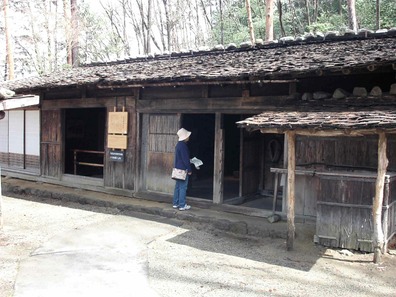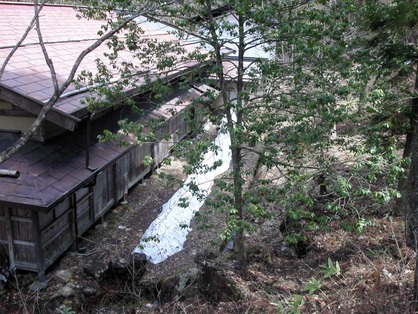
The buildings came from a variety of sources, and represented a range of occupations and social classes. There were farmhouses where the upper storeys were devoted to silkworm cultivation, a priest’s home, a village head man’s house where the walls could be removed to make a room large enough for public meetings, and a woodcutter's hut as well as a way-station from a main road.

And one building erected as a residence for a wealthy landowner.
While the odd casual onlooker might be tempted to dismiss the place as another tourist trap, it certainly looked to me like a genuine attempt to preserve aspects of the area’s traditional lifestyle, with streams of cold melt-water flowing downhill to power water mills. Here and there isolated patches of snow remained in hollows protected from the springtime sun.

Each of the buildings, for example, was heated, if that’s the right word to use when you’re talking about a few burning coals in the central living area, by fire rather than electricity, and I couldn’t help but wonder how the original occupants coped with winter temperatures that reached below minus twenty with two metres of snow on the roof.
It is not, however, the sort of place to take kids who can’t tie up their own shoelaces, since venturing inside almost every building involves removing the footwear. In hindsight I wished I’d invested in a pair of Velcro-equipped joggers.
Two hours of wandering through heritage houses on an empty stomach meant that we weren’t going to wait till we got back to town to eat, and fortunately just outside the heritage village we found a restaurant serving noodles with char sieu pork, which I washed down with half a litre of Asahi beer. Before heading back to the bus stop for the return trip to town.